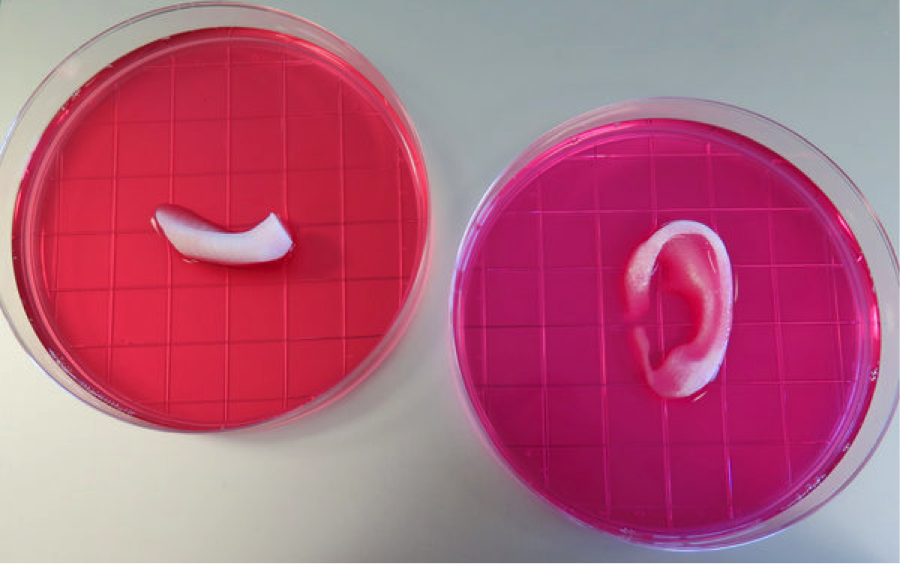3D Imaging May Replace Prosthetics?
By Erin Stackowitz, Staff Writer

A 3D printed jaw bone, left, and an ear.Credit: Wake Forest Institute for Regenerative Medicine (New York Times)
From the fictional brainchild of Mary Shelley to the bioengineers at Wake Forest Institute for Regenerative Medicine in North Carolina, scientists are getting closer to achieving the technology to create fully functionally organs and body parts from 3D printers.
Although there is no modern day Frankenstein in the works, scientists now have the ability to create and sustain printed cartilage in laboratory mice and have predicted that they will elevate this success to functioning organs within the next decade.
Hyun-Wook Kang, Sang Jin Lee and other bioengineers at Wake Forest were able to develop a method that not only prints 3D cartilage but also maintains its integrity and sustains blood flow and growth. These engineers detail the development of the calvaria (skull cap), jawbone, and ear cartilage in “a 3D bioprinting system to produce human-scale tissue constructs with structural integrity,” published in the journal Nature Biotechnology. As soon as the bones and cartilage were reconstructed using their integrated tissue organ printer- or ITOP- they ran trials on the implant in mice, which survived and thrived for months.
The successful survival of the tissue for an extended time period is due to the bone’s ability to maintain its structure. Its porous surface promotes the diffusion of nutrients allowing vessel growth. The tissue’s stability is due to its unique combination of materials that make up the cartilage. A mix of human and mice cells, gelatin, and a biodegradable plastic is placed in integrated patterns and attached to certain hydrogels.
Clinically, this printer is extremely effective in printing 3D bones in the image and likeness of its recipient using computer modeling and anatomical imaging data. With the success of blood and nerve growth, the researchers at Wake Forest are hopeful and plan to move their murine trials to humans next, with the hope of building larger bones and eventually organs. This would eradicate our need for prosthetics and decrease loss due to the wait on lengthy donor lists.
